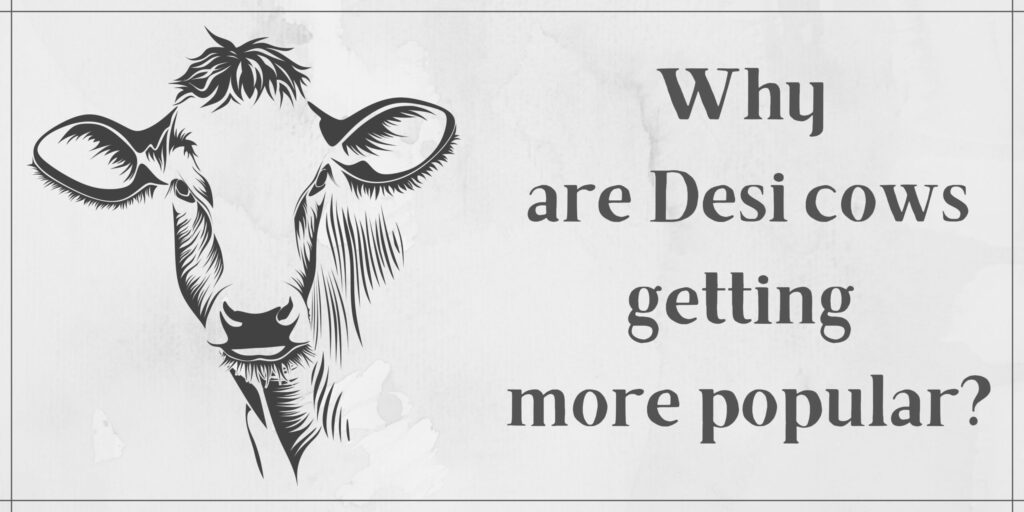Desi Cow Breeds
Desi cow breeds in India are the aboriginal household cows of the subcontinent. These kinds of cows have a hump on their back, as well as a huge dewlap. These cows are well-acquainted with the tropical and sweltering Indian climate. The A2 protein, which is particularly important for human health, is found in the milk of desi cows. Desi cows’ urine and dung are known to contain a variety of therapeutic characteristics that are employed in Ayurveda medicine. They are also utilized in bio-fertilizers. Indigenous breeds modify production in response to a variety of factors, including climate conditions and food availability. They are immune to illnesses that are specific to the location where they developed. ‘Elite’ breeds, on the other hand, are only produced under perfect, disease-free conditions. Exotic breeds are not economically feasible in the long run. Numerous breeds exist to suit a variety of climatic settings, and these cows have been the backbone of India’s rural economy for centuries.
Cows of various breeds produce varying amounts of milk. Indigenous Desi cows produce 4–8 litres of milk every day, depending on their lactation cycle. The desi cow breeds in India involve Sahiwal, Nagori, Gir, Hariana, Rathi, and Tharparkar. Certain breeds only produce 2 to 3 litres of milk, and there are undoubtedly some exceptions. A cow has been known to produce more than 40 litres of milk in a single day. A Gir cow may produce anything from 5 to 12 litres of milk per day. The Rathi cow can produce 3-6 litres of milk each day. The most popular is Hariana and Sahiwal, on the other hand, is considered a commercial success. Sahiwal is the country’s best indigenous dairy breed and produces between 1400 and 2500 kg of milk each lactation on average. Desi cows can be found in a variety of regions in India, including Haryana, Punjab, Delhi, and Uttar Pradesh.
Brazil is the leading exporter of Indian cow breeds, and there the Gir cow breed now produces over 62 litres per day. This regal cow, called She-Ra, from Gujarat, produced 62.033 litres of milk in a three-day milk contest at the ‘40th Expaja’ in Brazil, breaking her own record of 59.947 litres. The desi cow breeds in India are often called humped cattle, Brahman cow, or Bos Indicus Cattle. India had 111 different types of indigenous cows at the time of independence. There are just 37 of them remaining today, and you might wonder why. The government’s uncontrolled procurement of foreign crossbreeds from other nations is the cause of this impending biodiversity disaster. The native Indian types are on the verge of extinction due to the introduction of foreign cows. However, now that the public is aware, citizens and the government are working together to increase the number of indigenous cows.
Compared to Jersey cows, Desi cows produce less milk, but the composition of Desi cow milk (A2) has been proven to be the greatest and has particular medical features. Doctors encourage pregnant women, children, people with diabetes and heart ailments to drink it. Gir cows have recently earned a lot of attention for their healthy A2 milk and milk products. Nutritious milk with A2 protein is also produced by other desi cow breeds in India, including Sahiwal, Tharparkar, Rathi, Badri, Red Sindhi, and other breeds. Some cows, such as Khillar, are naturally developed for farm work that necessitates enormous muscle. They produce a small amount of milk, making them unpopular in the economic dairy market. To summarise, all purebred desi cows outperform imported Jersey/Holstein varieties when it comes to the nutritional worth of their milk, making them the greatest breed of cows. Due to the low operating costs for maintaining desi cows, small farmers have been able to sell surplus milk to state-run cooperative societies and private enterprises, which in turn package and sell it to brands like Amul, Nestle, and Britannia. This has helped and fed many impoverished families.



